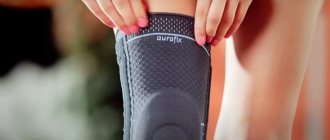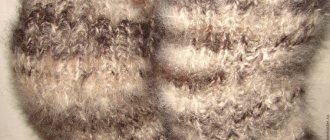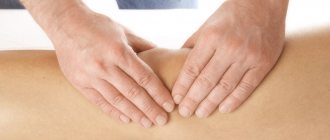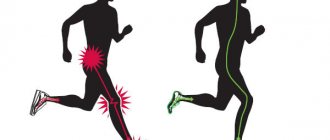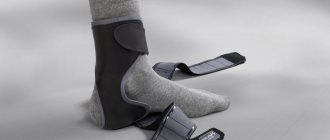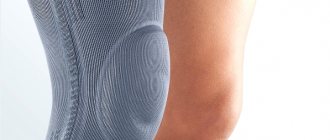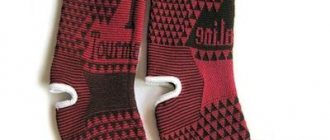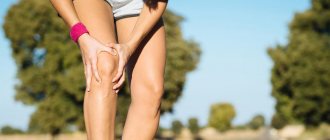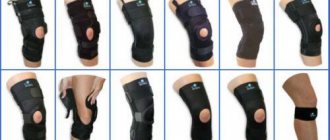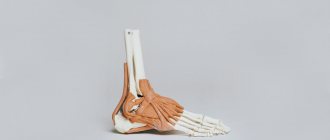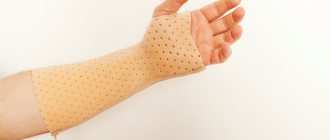The knees are one of the most vulnerable places for a runner, as the knee joint bears most of the load while running. In addition, this is the area that suffers during sudden stops while moving, sharp turns, spinal injuries, or wearing the wrong shoes (try to use the right running shoes). An increase in the intensity of training and age-related changes in tissues also lead to joint wear. Meanwhile, the health of the entire musculoskeletal system and the performance of a shock-absorbing function during landing depend on the condition of the knees.
To prevent damage to the knee joint, reduce the level of stress on the ligaments, running knee braces are used for quick recovery, maintaining an active lifestyle and reducing the likelihood of relapses. Such simple devices can increase the effectiveness and duration of training without the risk of injury. In this article we will tell you how to choose knee pads depending on the type of injury, consider the main types of products and the best models of this product category.
Further:
When do you need knee pads for running?
Knee pads can be used for both preventive and therapeutic purposes. In the first case, the products are used to protect the knee joint from injury by stabilizing the lateral ligaments of the knee and fixing the patella. This allows you to get additional support that will help you fully tune in to your running technique without being distracted by the sensations in your knees. In the second case, knee pads are used to completely immobilize the joint, as well as speed up the recovery of damaged tissue and remove fluid.
In particular, the use of knee pads is advisable in the following cases:
- Preparing for long distance races
- Presence of pain syndrome
- Rehabilitation after injury
- Exacerbation of chronic diseases of the knee joint
- Presence of vascular diseases in the legs
- "Instability" of walking
- Articular fractures
- Knee valgus – curvature of the joints
- Sprain
- Decreased joint mobility
- Patella luxation
- Meniscus injury
- Dystrophic changes in knee tissue
- Arthrosis or arthritis
- After injury
- Pain after exercise
- Postoperative recovery
Depending on the nature of the injury, a certain type of bandage is used.
Toughbuilt TB-KP-203R
Toughbuilt TB-KP-203R knee pads are an ergonomic, reliable product that can be used to work in harsh conditions. They are made of wear-resistant 1680D fabric and rubber that prevents scratches and damage.
Follows the natural shape of the knee and upper shin to distribute pressure for comfortable movement. A high sidewall is provided to reduce knee torsion.
pros
:
- do not slip;
- do not slip on the surface;
- soft and reliable material;
- do not pinch;
- Lifetime manufacturer's warranty.
Minuses
:
- the pads are not removable;
- high price.
Types of knee pads
Today you can buy the following types of knee pads in pharmacies:
- Medicinal . They fix the kneecap in the required position, have a warming effect, stimulate blood flow, reduce swelling, ensure effective recovery after surgery, improve the performance and flexibility of the joint, and promote the healing of damaged tissues, both bone and soft. Sometimes used as an analogue of applying a plaster cast. Some models have a detachable design, which makes it easier to treat wounds or sutures.
- Preventive . Used during physical activity or in the presence of excess body weight to reduce the level of stress on the knee area. Quite elastic, can be used as a replacement for a bandage. Helps reduce the likelihood of damage and injury.
- Daily. Used to improve circulation, reduce swelling and provide additional support. They partially reduce the load, but do not protect against injury.
- Compression . Provide basic support, protect the knee from accidental injury, warm and improve blood circulation. Creates moderate compression. A compression knee brace for running is also used if there is a certain knee injury, which helps to avoid its aggravation.
- Shock absorbing . They take part of the impact load on themselves, which reduces the level of stress on the knee joint while running. As a result, the intensity and effectiveness of the workout improves.
- Fixing . Provide immobilization of the kneecap, a high level of protection. Used in case of injury. This knee support acts as additional “ligaments”. They can be equipped with special regulators that allow you to control the range of movements. Mandatory for use under heavy loads.
Each situation is individual (the degree of damage, sports activity, nature and localization of pain, etc. play a role), therefore, before using a certain type of product, you should first consult with your doctor.
Examples of different types of knee pads
Below are the best knee pads for running based on the combination of price and quality, which is confirmed by the conclusions of experts and user reviews:
Medicinal
Ortop NS-716
Material – neoprene, polyester.
They are used for instability of the knee joint and injuries in the knee area. They are fixed on the leg using special straps. Used for inflammation, arthritis, instability of the knee joint, arthrosis and arthritis, and during recovery after surgery. Provide lateral stabilization and unloading of the joint. Reduce swelling, pain and increase blood circulation.
Disadvantage : they require delicate care.
Price : about $38.
Rehabilitimed K-1 TM
Material – aeroprene, metal.
The joint is securely fixed using spiral stiffening ribs made of metal. Purpose – immobilization of the knee in the treatment of chronic diseases and knee injuries. Equipped with Velcro straps that allow you to fix the product on the limb in the required position. They warm tissues, improve blood flow, and do not interfere with air flow to the skin. They are used for pain, joint deformation, exacerbation of chronic diseases, joint instability, rehabilitation and prevention.
Feature – maximum adaptation to the shape of the limb.
Disadvantage - they are not suitable for acute inflammatory processes with the release of pus, tumors, or in the first 72 hours after receiving a serious injury.
Price - about 21 $.
Preventive
Ortiman 9106 Rodisil
An innovative material made using 3D knitting technology, technogel.
Provide stabilization of the knee joint, fixation of the kneecap due to heavy-duty fasteners, comfort during flexion and extension of the joint. They retain their qualities after washing, do not irritate the skin. They are used for conservative therapy, prevention and reduction of the likelihood of re-injury, the presence of inflammatory and destructive processes in the knee joint.
Disadvantages – not suitable for those with tumor-like formations in the knee area.
The cost is about $88.
Asics GEL KNEE PAD U DRK FW14-15
Material – cast rubber, polyester.
Orthopedic, elastic, securely fixed on the leg. At the same time, they do not exert pressure, adapt to the shape of the legs, and can be worn under clothing. Improve blood circulation, accelerate blood circulation in tissues and provide air access to the skin. Reduce pain, distribute and absorb shock loads. They help reduce the likelihood of knee injuries, protect during impact loads, and absorb moisture, preventing the limb from sweating.
Disadvantage - not suitable for persons with individual intolerance to the material.
Price - about 16 $.
Daily
Actius ACE 802 Orliman
Material – 3D jersey.
Elastic, prevent microtraumas, relieve pain and reduce stress levels. Breathable, prevents moisture accumulation. Helps with arthritis, ensures maintenance of the kneecap in the correct position.
Disadvantages - require special care.
Price – about 17 $.
KS-10 Dr. Life
Material – silicone, elastic fabric.
They are fixed according to the anatomical curves of the limb, comfortable during dressing, and breathable. Reduces the likelihood of sprains and tissue swelling. They have a massage and lymphatic drainage effect, relieve discomfort in the kneecap area, and are hypoallergenic. Suitable for sports - comfortable during physical activity.
Disadvantages - not suitable for those with individual intolerance to the material, require delicate care.
Price – about 8 $.
Compression
Knee pad BK-1X Tisa
Material – cotton, lycra, elastane.
Used during physical activity. Provides compression support to the extremities. It is also used for arthrosis and arthritis, after surgery, injuries, sprains, and as a preventive measure for the development of varicose veins.
Disadvantage : fragility.
Price – about 7 $.
Medi elastic Knee Supports
Material : silicone.
A sports knee brace for running of this type is used to stabilize the knee joint in cases of sprained ligaments, tissue inflammation, and the presence of pathological changes in the joints. It has a micromassaging effect and is invisible under clothing. This model has a wide range of sizes - 7 options.
Disadvantages - not suitable for tumors in the knee area.
Price - about 36 $.
Shock absorbing
4100 Orliman
Material – neoprene.
Suitable for reducing the impact load on the knee joints when running. Correspond to the anatomical shape of the limbs. Used for chronic degenerative changes in joints, bruises, injuries, for additional protection, reducing fatigue and pain after training. Provide additional support and compression. Pleasant to the touch, do not deform during use.
Disadvantages : they require special care, can cause hyperthermia, and are not suitable for long-term wear.
Price - about 26 $.
Knee brace K-1U Rehabilitimed
Material : air neoprene, metal ribs.
Provide fixation, protection of the knee joint and reduce shock loads. Suitable for wearing during the period after surgery, recovery from injuries. Relieves swelling and local pain. Reduce the likelihood of injuries and sprains. Provide air flow to the skin and are hypoallergenic.
Disadvantages - not suitable for those with skin diseases in the knee area, not used in the first 72 years after injury in the joint area.
Price – about 19 $.
Fixing
Aurafix REF: AO-47
Material : terry cloth, sponge, sticky surface.
There are special metal ribs. The product can be adjusted according to the leg using Velcro. Provide leg fixation in any direction. Replace the plaster cast. This knee joint fixator is used for displacement of the knee cap, ligament damage, surgery, sprains and dislocations, joint deformities, arthritis, arthrosis. Designed for long term use.
Disadvantage : susceptibility to mechanical deformation.
Price - about 46 $.
Rehabilitimed K-1U
Material – aeroprene.
Equipped with spiral-shaped metal ribs. Used for soft fixation, support of soft tissues and the knee joint. Has a micromassage, warming effect. Stimulates blood circulation and delivery of nutrients to muscles. Used for injuries and bruises of the knee, meniscus injury, instability of the knee joint, during the rehabilitation period, after surgery. Effective against rapid fatigue, as a prevention of injuries and sprains when playing sports.
Cons – not suitable in the first 72 hours after acute injury.
Price - about 19 $.
Contraindications
When should you not wear a knee brace for running?
- For severe injuries of the patella/after operations without a doctor’s prescription. Especially if there is acute pain, severe swelling, limited mobility, or an open wound;
- To ignore chronic knee pain and continue active training;
- If you have an allergy to patellar materials + skin diseases;
- For varicose veins, thrombophlebitis, phlebothrombosis, diabetes mellitus: especially with the formation of trophic ulcers;
- If the size/stiffness of the patella is inappropriate.
Choosing knee pads depending on the injury
You should choose knee pads based on the nature of the injury. In particular:
- Therapeutic - used after surgery, for meniscus injury, ligament damage, osteochondropathy, fractures, arthrosis, osteoarthrosis.
- Prophylactic ones should be chosen for minor injuries, swelling, bruises. An elastic knee pad will improve blood circulation, reduce swelling and pain intensity. Effective in treating ligament damage, eliminating the consequences of arthritis, arthrosis, trauma, and is used to reduce stress and minimize the likelihood of injury when playing sports.
- Daily - used for swelling, discomfort in the joint area and minor sprains, to support muscles and ligaments.
- Compression - to improve tissue microcirculation, relieve swelling, used for arthritis and heavy loads on joints.
- Shock-absorbing - used when knees hurt, bruises, sprains, excess weight, arthrosis changes in the joint, relieve tension.
- Fixing knee pads with stiffening ribs should be preferred in cases of instability of the knee joint, arthrosis, advanced arthritis, sprains, joint displacement, fractures and dislocations.
Running Knee Pad Materials
The following materials are often used to make knee pads:
- Knitwear – provides a compression function for products, retains heat in the area of the damaged joint, and has a micromassage effect. This material is used for easy fixation after minor injuries, tissue swelling, sprained ligaments, as an alternative to an elastic bandage.
- Neoprene - reduces the likelihood of injury during sports activities, provides reliable fixation and shock absorption while running. Warms fabrics, not suitable for long-term wear.
- Silicone – provides reliable fixation of the joint in the required position. Used after injuries and surgical interventions.
- Cotton – ensures a tight fit of the product to the surface of the limb, has an orthopedic effect, and is hypoallergenic.
- Nylon is durable and has a long service life.
- Lycra - products based on this material are elastic and provide air access to the body.
- Spandex - used to tightly fit the limb.
TOPEX 82S162
Protective knee pads TOPEX 82S162 are made of soft rubber and include plastic pads. There are gel inserts. The neoprene fastening, adjustable with Velcro, securely fixes the knee pads in the right place.
The product reliably protects the knees from impacts, abrasions and bruises. Suitable for work in cold weather.
pros
:
- do not get off your feet;
- good quality fabric;
- good shock absorption;
- low cost;
- Manufacturer's warranty for manufacturing defects is no more than two weeks.
Minuses
:
- narrow back Velcro;
- too big size;
- the size is practically not adjustable;
- the knee pads slide on the tiles.
Running knee pad sizes
It is critically important to know how to choose a knee brace according to size, because the product should fit tightly on the leg, but not squeeze the area of the limb. It should be determined based on your size and muscle relief, as well as the characteristic anatomical features of the patella.
In order to determine which knee brace size is right for you personally, you need to measure the circumference of your knee joint. The relationship between these parameters is as follows:
| Knee joint circumference (mm) | Knee pad sizes |
| 380—460 | S.R. |
| 430—460 | XL |
| 330—380 | JR |
| 380—430 | L |
| 350—380 | M |
| 330—350 | S |
A correctly selected product does not cause discomfort and fits the limb according to its shape. It should also be remembered that purchasing products with Velcro has an important advantage - the ability to change the fixation force.
KVT S-60 78426
Knee pads KVT S-60 78426 are made of neoprene. They provide stability on any surface. They have silica inserts that take the shape of a knee.
The KVT S-60 78426 model can be used in cold weather. The size is adjustable by the top velcro above the knee and the bottom velcro below the knee.
pros
:
- wide Velcro;
- do not interfere with walking;
- corrugated plastic on the front;
- large surface area;
- suitable for work in the cold season;
- manufacturer's warranty – up to 5 years;
- affordable price.
Minuses
:
- the upper mount cuts into the leg;
- sometimes they slide to the side when working;
- The top elastic may curl.
Knee pad selection table
| Name of knee pads | Product type | Nature of injury | Material of manufacture |
| Ortop NS-716 | Medicinal | Inflammation, arthritis, injury | Neoprene, polyester |
| Rehabilitimed K-1 TM | Medicinal | Injuries. Deformations, bruises | Aeroprene, cotton fabric |
| Ortiman 9106 Rodisil | Preventive | Sprains, arthritis, arthrosis, injuries. | Innovative material, technogel |
| Asics GEL KNEE PAD U DRK FW14-15 | Preventive | Minor damage, sprains. | Molded rubber, polyester. |
| Actius ACE 802 Orliman | Daily | Microtraumas | 3D knitwear |
| KS-10 Dr. Life | Daily | Swelling, sprains | Silicone, elastic fabric |
| BK-1X Tisa | Compression | Arthritis, arthrosis | Cotton, lycra, elastane |
| Medi elastic Knee Supports | Compression | Inflammation. Pathological changes in joints | Silicone |
| 4100 Orliman | Shock absorbing | Bruises | Neoprene |
| K-1U Rehabilitimed | Shock absorbing | Swelling, stretching | Air neoprene, metal ribs. |
| Aurafix REF: AO-47. | Fixing | Injuries, dislocations | Sponge-like terry cloth (AuraTerry) |
| Rehabilitimed K-1U | Fixative | Bruises. Meniscal injuries | Aeroprene |
No one is immune from knee injuries and pain in this area - neither beginner runners nor experienced professionals. You should not ignore these manifestations and continue training despite the discomfort. It is worth contacting specialists and choosing the optimal knee pads. With their help, the progression of pathologies will stop, and running will bring real pleasure.
